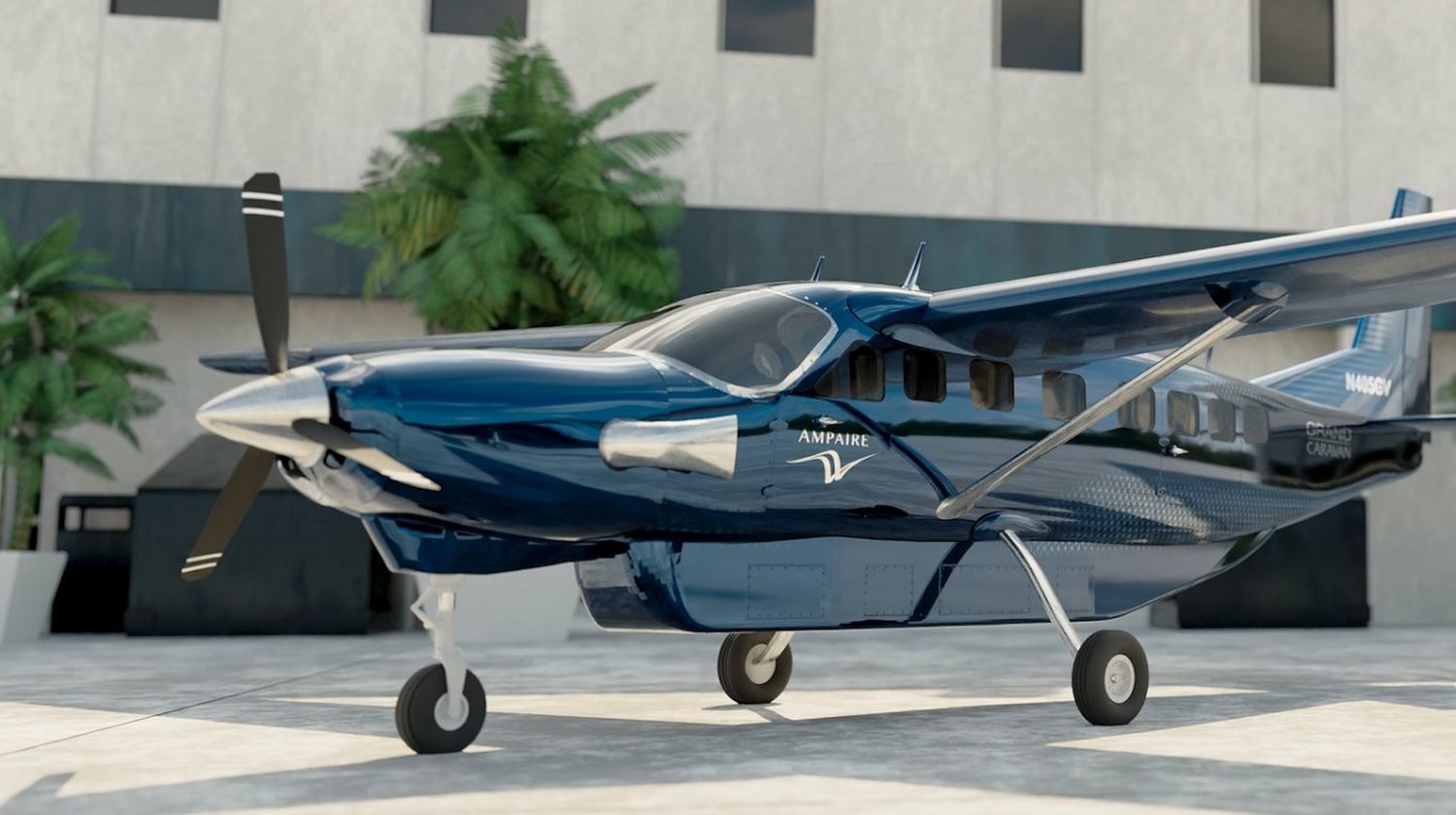Ampaire receives order for up to fifty Eco Caravan hybrid aircraft
U.S. based Ampaire, a developer of electric and hybrid propulsion solutions for aviation, announced yesterday that it has received a firm order for 25 Eco Caravan hybrid aircraft from MONTE, an aircraft leasing company that finances sustainable mobility solutions for regional aviation. The agreement also includes an option for another 25 airplanes.
The Eco Caravan is Ampaire’s first commercial product. It is a hybrid propulsion model developed from the popular Cessna Grand Caravan. The adaptation maintains the range and payload capacity of the original one.
«“MONTE is looking to build a fleet of low emission and zero emission aircraft to lease or finance for regional aircraft operators worldwide», said Timothy Eyre, the company’s Investment Director. Eyre highlighted Ampaire’s product and said: «Its Eco Caravan will be very attractive for a segment of our operators, thanks to its wide performance envelope».
«The Eco Caravan is our starting point for a revolution in air travel», said Kevin Noertker, CEO of Ampaire. «The propulsion technology is scalable and we intend to quickly move toward larger regional aircraft and even the single-aisle jet market over time», he added.
Eco Caravan main features
As reported by its developer, the Eco Caravan can carry up to nine passengers and has a range of up to 800 miles (1.287 kilometres). In addition, it can carry up to 2.500 pounds (1.133 kilograms) of payload.
Compared to the original Cessna Grand Caravan, the hybrid version consumes up to 70% less fuel on short trips and up to 50% less on longer routes. Consequently, it enables a considerable reduction of carbon dioxide emissions into the atmosphere. Operating with sustainable aviation fuel (SAF) reduces emissions by up to 90%, according to Ampaire.
Moreover, the overall reduction in operating costs is between 25% and 40% compared to the original model, depending on the route. The aircraft can recharge its batteries in flight, so it could eventually use any airport suitable for a Cessna Grand Caravan, regardless of the availability of ground power charging infrastructure.
The new version of the turboprop has already undergone its first power tests on the ground and is expected to complete its first flight before the end of the year. It thus became the first hybrid aircraft to enter the United States Federal Aviation Administration’s (FAA) Supplemental Type Certification (STC) process. This is a less complex programme than that required to certify a completely new model. For this reason, Ampaire expects to obtain all necessary approvals in 2024.
See also: Ampaire and Tamarack Aerospace to work on aerodynamic improvements for hybrid aircraft


Comentarios
Para comentar, debés estar registrado
Por favor, iniciá sesión